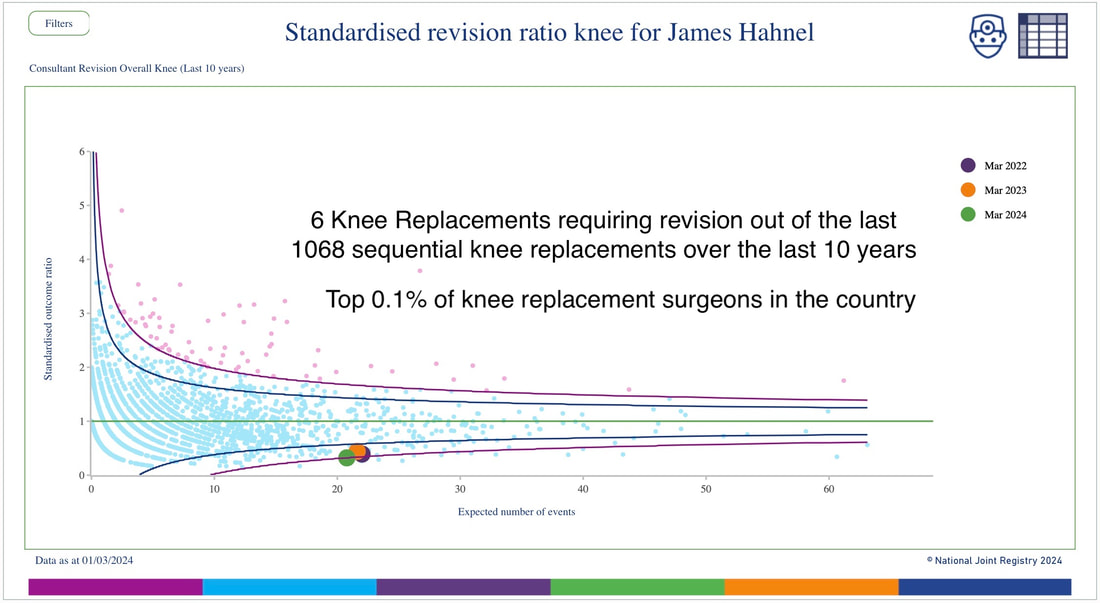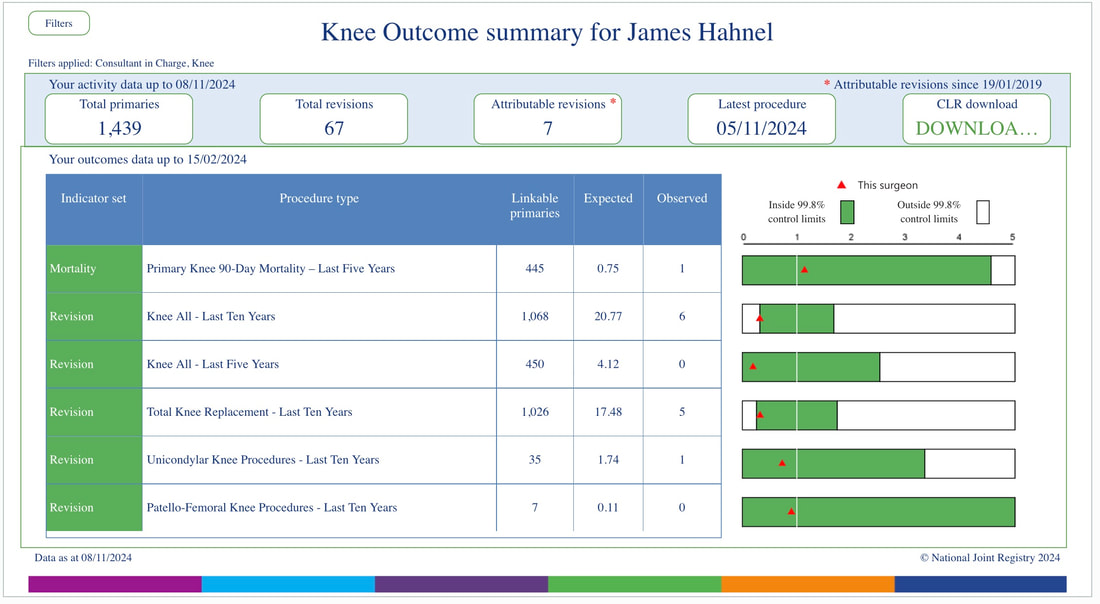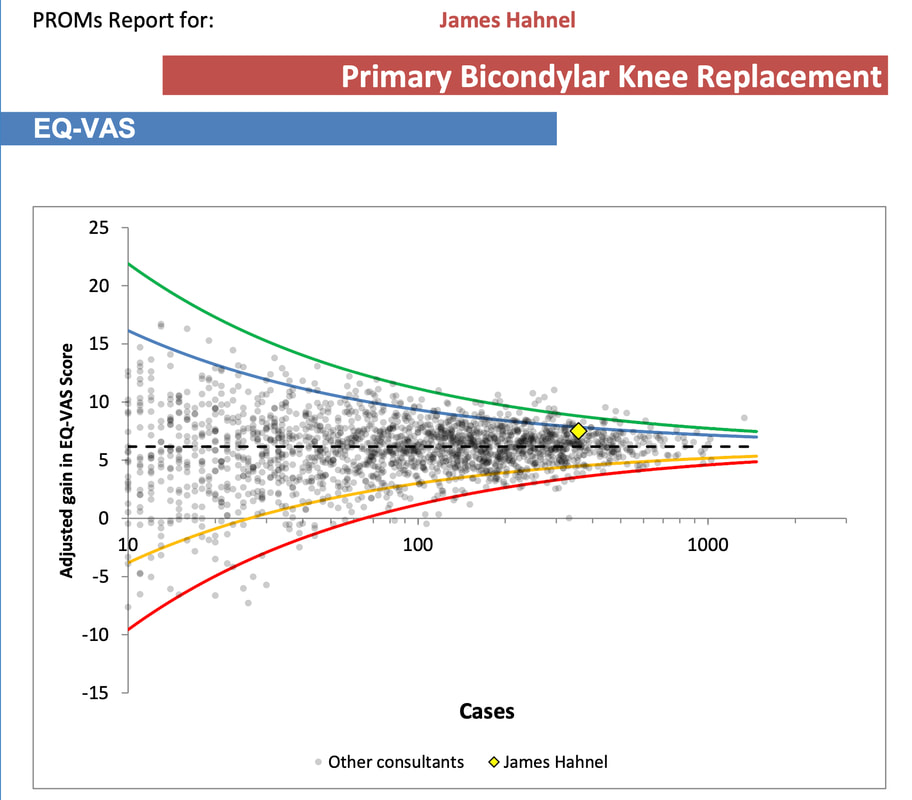Why choose James for knee surgery?

Mr Hahnel has performed well in excess of a thousand knee replacements and has been a Consultant orthopaedic surgeon since 2011. He works in the NHS performing hip and knee replacements as well as looking after sports injuries (including knee arthroscopy). He is a NHS trainer and a member of Zimmer teaching Faculty. He has excellent clinical outcome data as shown by the National Joint Register and excellent patient reported outcome measures.
His revision funnel plot data from the national joint register as well as PROMS data are as below. Latest data shows that he is in the top 0.1% of surgeons for knee replacements in the UK. For a full explanation of the images and what they mean please click on the image.
His revision funnel plot data from the national joint register as well as PROMS data are as below. Latest data shows that he is in the top 0.1% of surgeons for knee replacements in the UK. For a full explanation of the images and what they mean please click on the image.
Outcome data
Frequently Asked Questions
When is the right time for a knee replacement?
|
What is a total knee replacement?
|
What does a partial knee replacement involve?For some patients knee arthritis is localised to just one part of the knee. In these patients it is possible to treat their arthritis by just replacing the worn part of the knee, leaving the rest of the knee untouched. This may involve replacing the inner or outer aspects of the joint, or the patello-femoral joint (knee cap).
Partial knee replacement has some potential advantages over total knee replacement in the appropriate patient. It is a smaller operation meaning that post- operative pain is usually less and recovery is typically quicker. As the unaffected ligaments and joint surfaces are left intact the knee moves and feels more like a natural knee. This means that post- operative range of movement, function and patient satisfaction are often higher when compared to total knee replacement patients. |





